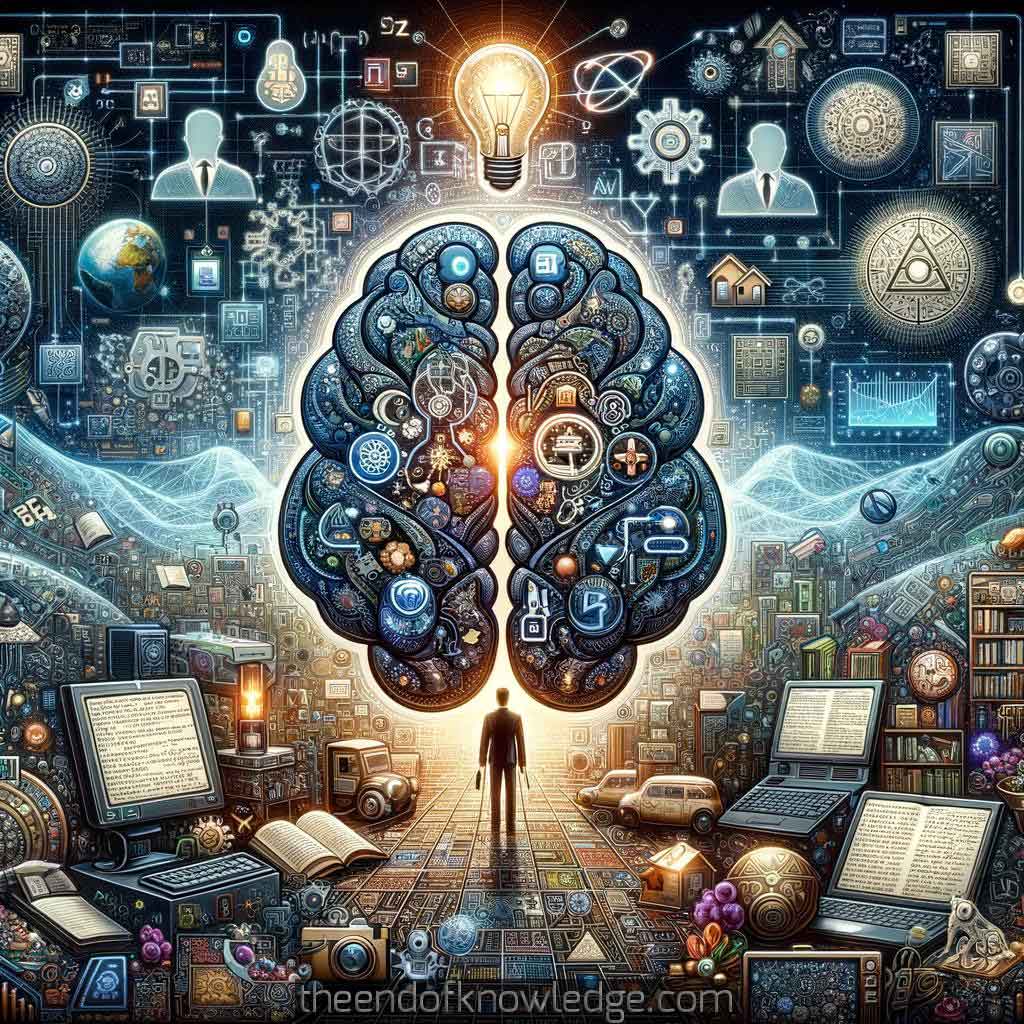 >
>
Concept Graph (using Gemini Ultra + Claude3):
Custom ChatGPT resume of the OpenAI Whisper transcription:
1.- Cyc's Expansion through Machine Learning and NLU: Cyc aims to automate knowledge acquisition by harnessing machine learning and natural language processing, focusing on self-supervised learning methods to feed Cyc with assertions derived from the vast amount of internet data.
2.- Priming the Knowledge Pump: The concept of "priming the pump" is discussed, emphasizing the importance of having a substantial core of knowledge. The more Cyc knows, the easier it is to learn new things, highlighting the necessity of a large initial knowledge base to avoid brittleness seen in systems like GPT-3.
3.- Semantic Web Vision: Lenat elaborates on the Semantic Web as a knowledge graph to create more meaningful connections on the internet. However, he critiques current implementations as insufficient for the complexity of real-world knowledge representation.
4.- Romeo and Juliet Example: Using "Romeo and Juliet," Lenat illustrates the limitations of simple knowledge graphs and semantic web representations in capturing complex human emotions and relationships, showcasing the need for a more expressive logical language.
5.- Reflection on AI's Capabilities: Lenat reflects on AI's current limitations, particularly in providing meaningful explanations and understanding content deeply. He emphasizes the gap between statistical models like GPT-3 and the comprehensive understanding Cyc aims for.
6.- Meta-Reasoning and Heuristic Modules: The discussion moves towards Cyc's meta-reasoning capabilities and its heuristic-level modules. These modules allow Cyc to approach problems more efficiently, demonstrating the system's ability to apply specific knowledge and tactics to various scenarios.
7.- Efficiency in Reasoning: Lenat discusses the balance between expressiveness and efficiency in AI reasoning. Cyc's architecture allows for a division between its epistemological representation and heuristic processing to maintain expressiveness without sacrificing speed.
8.- The Role of Ontologists and Engineers: Cyc's development involves a collaboration between ontologists, who focus on knowledge representation without programming skills, and engineers, who optimize the system's efficiency. This dual approach underscores the diverse expertise required to build Cyc.
9.- Lisp Programming Language: The conversation touches on Cyc's foundation in Lisp, a programming language praised for its flexibility and expressiveness. This choice reflects the system's emphasis on advanced logical capabilities and the necessity of a robust programming environment for AI development.
10.- Collaboration and Open Psyche: Lenat discusses the challenges and strategies in collaborating with other researchers and the AI community. He highlights the delicate balance between open-sourcing parts of Cyc and protecting its comprehensive knowledge base to ensure continued advancement and application.
11.- Transition to Commercial Applications: Doug Lenat discusses Cyc's shift from primarily government-funded projects to commercial applications, highlighting the importance of maintaining control over the project to ensure its continued progress towards understanding and encapsulating all human knowledge.
12.- Open Cyc Misconceptions: Lenat clarifies misconceptions about Open Cyc, explaining it was intended to demonstrate the limitations of simple knowledge representations and encourage the adoption of Cyc's more comprehensive system. However, the effort inadvertently led some to settle for the less complex Open Cyc, underestimating the value of the full Cyc knowledge base.
13.- Collaboration and Knowledge Sharing: He emphasizes Cyc's policy on proprietary knowledge versus public human knowledge, ensuring that any general knowledge contributed by partners becomes part of the openly available Cyc database, despite pushback from companies wanting to claim proprietary rights.
14.- Knowledge Representation and Reasoning: Lenat discusses the challenges of expressing complex ideas and the importance of an expressive representation language. He critiques the reliance on simpler models like knowledge graphs for advanced reasoning, underscoring Cyc's use of higher-order logic for a deeper understanding of information.
15.- Efficiency and Programming in Lisp: The efficiency of Cyc's reasoning and its programming in Lisp are discussed. Lenat explains how Cyc balances expressiveness and efficiency through a division between epistemological representation and heuristic processing, with Lisp providing the flexibility and expressiveness needed for Cyc's complex logical operations.
16.- Human-like Understanding and AI Challenges: The conversation touches on the need for AI to achieve a human-like understanding of the world. Lenat argues against the necessity of a physical body for AI intelligence, suggesting that understanding human experiences and emotions is more crucial than physical embodiment.
17.- Consciousness and AI: Lenat shares his views on AI and consciousness, asserting that if an AI can exhibit behaviors and responses indicative of consciousness, it should be considered as such. He challenges the notion that consciousness requires a mystical or physical component beyond functional behavior.
18.- Mortality and AI's Understanding of Death: Discussing AI's understanding of mortality, Lenat questions the relevance of an AI's fear of death for its intelligence. He suggests that AI's comprehension of human life's value is more important than its own existential fears.
19.- AGI's Potential Contributions to Humanity: Lenat expresses hope that AGI, like Cyc, could identify solutions to global problems by recognizing human cognitive biases and blind spots, thus facilitating paradigm shifts in science and society.
20.- Legacy and Advice for the Future: Lenat concludes with personal reflections on his legacy and offers advice to future generations. He emphasizes the importance of perseverance in pursuing long-term goals and the courage to follow unconventional ideas, hoping to be remembered as a pioneer who contributed significantly to AI's development and its integration into society.
Interview byLex Fridman| Custom GPT and Knowledge Vault built byDavid Vivancos 2024